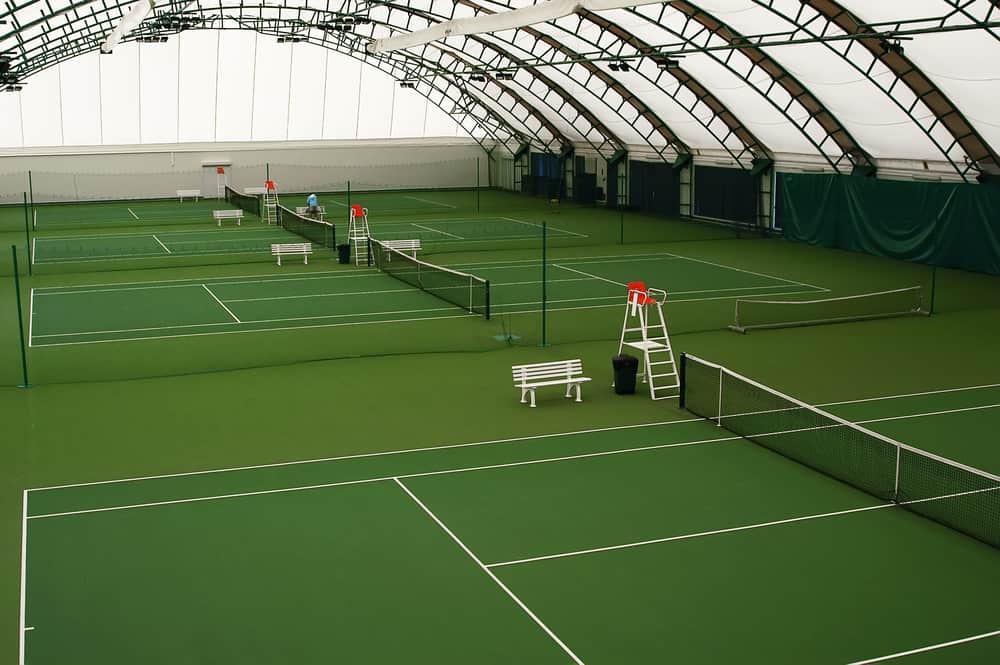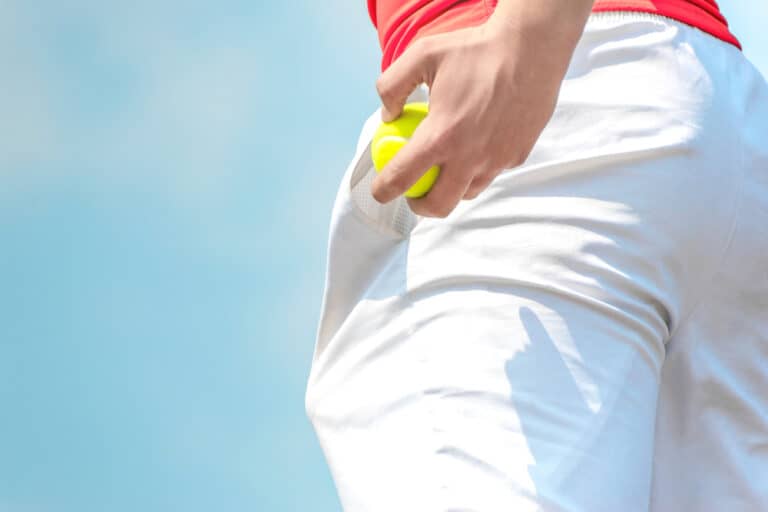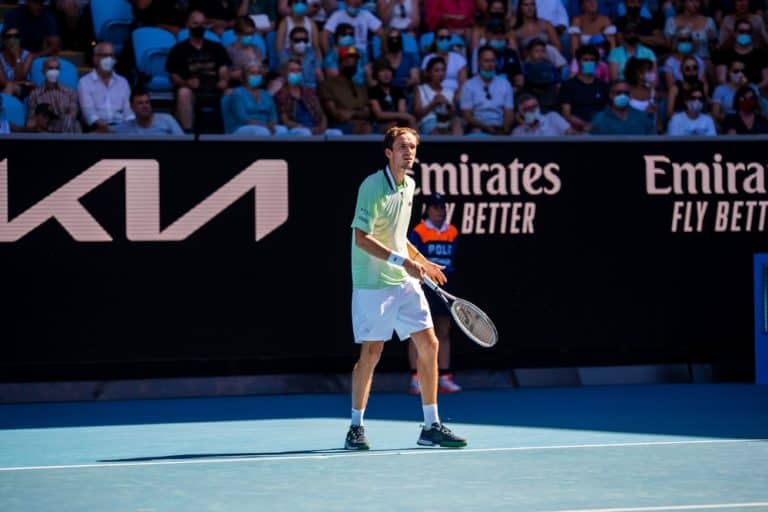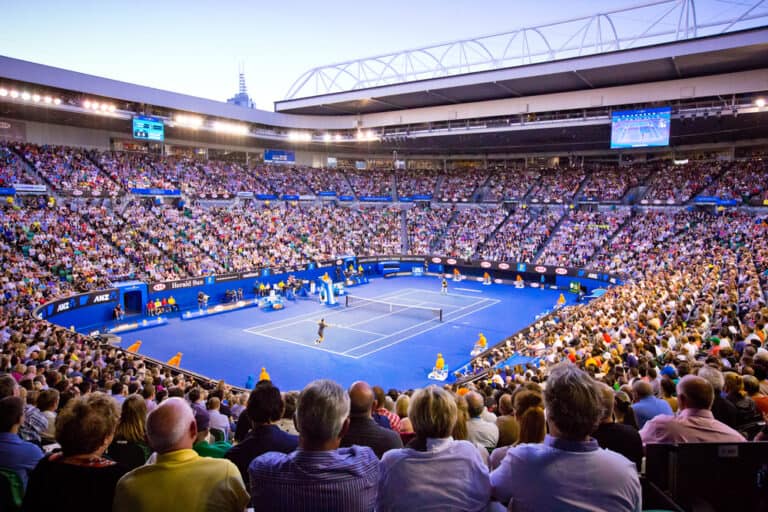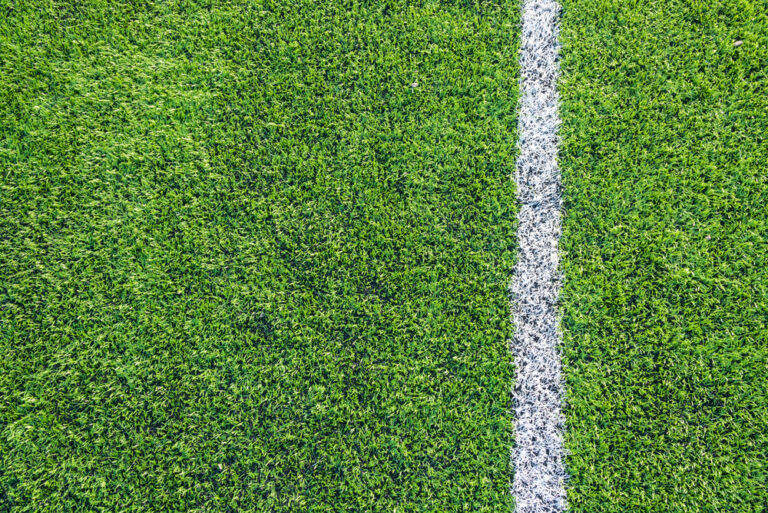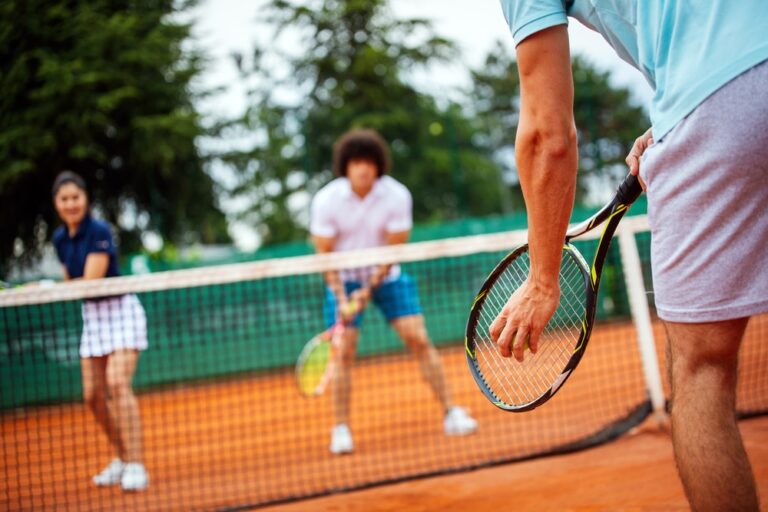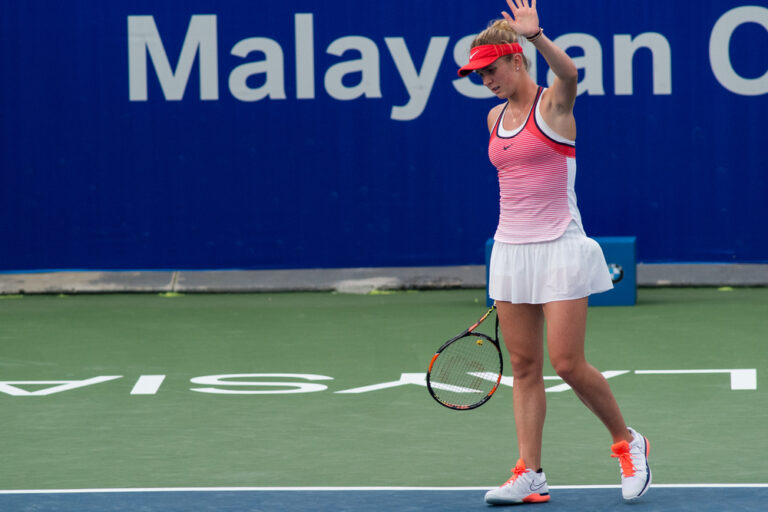Are Indoor Tennis Courts Faster?
Indoor tennis courts are very convenient, especially on days when outside weather conditions are less than ideal for a tennis game. However, indoor tennis courts offer tennis players an entirely different game compared to outdoor tennis courts. The factors that distinguish indoor tennis courts from outdoor courts also influence the players’ gameplay. It has been widely accepted that indoor tennis games tend to be faster than outdoor games.
Indoor tennis courts allow for faster games due to the lack of external factors like sun, wind, dirt, and moisture interfering with the ball’s speed and bounce. Tennis players do not tire as quickly indoors and can perform better. Indoor courts are flat and don’t have uneven surfaces or cracks that may slow down the ball.
Tennis players must know what to expect if they’re considering a switch from an outdoor tennis court to an indoor court. We elaborate on how indoor tennis courts affect the ball’s speed and bounce so that tennis players can be well prepared before their next game.
Differences Between Indoor And Outdoor Tennis Courts
It’s important for avid tennis players to know the main differences between indoor and outdoor tennis courts so that they can know how each court will affect their gameplay. It can also help players improve their technique so that they can play well both indoors and outdoors.
1. Ball Speed And Bounce Is Higher Indoors
Ball speed tends to be much higher when playing on indoor tennis courts. However, this is not necessarily due to the court’s surface but rather the lack of resistance caused by wind, dirt, and moisture when playing outdoors.
Outdoor courts are slower due to weather conditions like wind, rain, dirt, and moisture. Since indoor courts don’t have these external factors affecting the ball speed, the game tends to be faster, and the ball bounces higher.
2. Indoor Tennis Courts Offer A Controlled Environment
Every day is the same when you play on indoor courts. The temperature can be maintained to remain at a comfortable level for both players and spectators. Also, there’s no chance of wind or rain interfering with the pace of the game, and the court surface is usually kept clean from dirt.
If you play on outdoor tennis courts, every day may be different depending on the weather conditions. Factors like wind and rain need to be considered, and the court surface may be covered in a little bit of dirt or sand. Outdoor courts are also exposed to heat from the sun and may have small cracks or uneven patches, whereas indoor courts are flat and rarely have any cracks.
3. Fatigue Sets In Slower With Indoor Tennis Courts
External factors like sun and wind can cause a tennis player to tire and dehydrate much quicker than when playing on an indoor tennis court. Indoor tennis courts offer a much more comfortable environment and favorable conditions that enable players to play for much longer. In contrast, outdoor courts often come with tough weather conditions that drain a player’s energy.
Tennis players may play with much more vigor on indoor courts than outdoors. When transitioning from indoor to outdoor courts, it is important to replenish your energy with snacks and increase your water intake during the game.
Factors That Affect The Speed And Bounce Of A Tennis Ball
The power and force that a tennis player uses when hitting the ball obviously play a role in the speed of the ball. However, there are other factors that determine how fast the tennis ball flies through the air and how high it bounces on the other side of the net.
1. Court Surface
The tennis court surface has a significant effect on how the ball moves and bounces once it hits the ground. Certain court surfaces are smoother and offer more speed and bounce, while others are more uneven, causing slower balls with lower bounce.
2. Temperature & Humidity
Hot temperatures (indoor or outdoor) will make a ball move through the air faster, while colder temperatures will cause the ball to move slower and bounce lower.
3. Rain
Rain always lowers the speed of the court surface and will slow down a game of tennis. The water from the rain will make a tennis ball heavier as it takes up the moisture and cause it to move slower and bounce lower.
4. Wind
Depending on the side of the court you play on, the wind may either cause resistance that slows down the ball’s speed or push the ball to accelerate and bounce much higher when it moves with the wind. Longer, higher strokes are most affected by windy conditions.
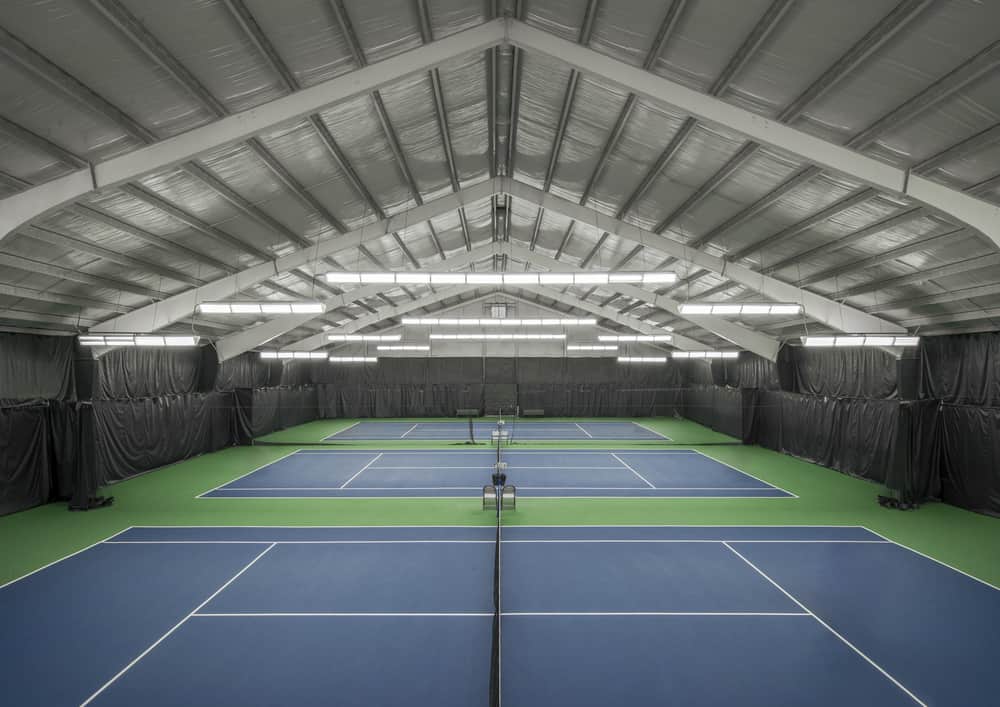
What Surfaces Are Used For Indoor Tennis Courts?
Indoor tennis courts are made using the same surfaces as outdoor tennis courts. Any surface used to create an outdoor court can be used for an indoor court, as long as it is adequately maintained. However, indoor tennis court surfaces are much easier to maintain because the roof and surrounding walls protect from external factors like heat, cold, sun, wind, rain, and snow.
Different Types Of Tennis Court Surfaces
There are many different types of tennis court surfaces used for indoor and outdoor courts. The different types of tennis court surfaces include:
- Acrylic (hard court)
- Asphalt (hard court)
- Concrete (hard court)
- Carpet
- Clay or artificial clay
- Hybrid clay
- Grass or artificial grass
All the different tennis court surfaces are made up of several layers and follow a specific construction process. The top layer of the court (e.g., grass, clay, acrylic) is the thinnest uppermost layer that we can see. The composition of each different court is what makes them fast and bouncy or slow.
Which Tennis Court Surface Is The Fastest?
Grass tennis courts are by far the fastest surface used in tennis. The slippery surface of a well-maintained grass court allows the ball to slide and accelerate when it bounces off the grass. Grass courts also have low bounce, which keeps the ball close to the surface, allowing it to generate more speed. Grass courts are great for big servers.
Hard courts (e.g., concrete, asphalt) are second in line when it comes to speed. Hard tennis courts are medium speed but offer the highest bounce out of all the court types. These are ideal for longer rallies and baseline players.
Clay tennis courts are the slowest tennis surface but generate high bounce. This can make rallies longer and allow players to generate more spin and find better angles.
What Is The Best Surface For Indoor Tennis Courts?
The best and most common surface used for indoor tennis courts is hard court, which refers to acrylic, concrete, or asphalt.
Another surface commonly used for indoor courts is carpet, a fast surface with low bounce. Carpet is great for training but rarely used for professional tennis tournaments. Wood is also a great option for temporary indoor tennis courts and can easily be set up over a venue’s standard flooring.
Clay can also be used for indoor courts, but they require an indoor watering system to keep the clay from drying out.
Are Indoor Tennis Courts Faster?
If you take all the above information into consideration, it is safe to say that indoor tennis is faster than outdoor tennis.
The court surface plays a role, but this applies to both indoor and outdoor courts since all surfaces used for outdoor courts can be used for indoor courts. Indoor court surfaces may play faster since they are smooth and flat with no cracks and less damage.
Besides having a better court surface, indoor courts are also faster because they have a roof and walls preventing factors like wind and heat from interfering with the speed and bounce of the ball. The ball accelerates quicker and bounces higher, allowing for more powerful serves and fastballs.
Additionally, the enclosed tennis court offers a cool, comfortable environment that boosts the tennis player’s energy levels and performance and enables him to maintain a fast-paced, high-energy game.
Conclusion
Indoor tennis and outdoor tennis are not the same, with each requiring a certain level of expertise and different gameplay techniques. Indoor tennis courts allow for faster games in a comfortable, controlled environment. In contrast, outdoor games tend to be slower and more physically draining due to the sun, wind, and other external factors.
References
- https://keystonesportsconstruction.com/how-different-is-it-to-play-the-various-tennis-court-surfaces/
- https://blog.davidlloyd.co.uk/a-guide-to-different-tennis-surfaces/
- https://www.tennisct.com/indoor-outdoor-tennis-tips
- http://www.tennisserver.com/turbo/turbo_1https://www.tennisgems.com/differences-playing-indoors-and-outdoors/0_01.shtml
- https://www.tennisvancouver.com/blogs/news/differences-between-indoor-and-outdoor-courts
- https://www.ertheo.com/blog/en/type-tennis-courts/
- https://mytennishq.com/the-different-types-of-tennis-court-surfaces-explained/
- https://eliteclubs.com/the-differences-between-indoor-and-outdoor-tennis/
- https://fogmountaintennis.wordpress.com/2014/04/11/court-speed/
- https://www.tennisgems.com/differences-playing-indoors-and-outdoors/
- https://tennisnerd.net/misc/tennis-court-speeds/22912
- https://bleacherreport.com/articles/955621-roger-federer-and-rafael-nadal-why-indoors-is-an-altogether-different-ball-game
- https://www.nytimes.com/2019/10/26/sports/tennis/indoor-tennis-courts.html
- https://www.quora.com/Why-do-indoor-courts-play-slower-as-compared-to-outdoor-courts-in-tennis
- https://tt.tennis-warehouse.com/index.php?threads/indoor-court-vs-outdoor-hardcourt.221075/
- https://tt.tennis-warehouse.com/index.php?threads/saying-indoor-courts-are-faster-is-actually-due-to-the-surface-or-the-atmosphere.658620/
- https://longislandtennismagazine.com/article9151/transitioning-outdoor-indoor-tennis
- https://www.coprisystems.com/the-differences-between-indoor-and-outdoor-tennis/
- https://www.playfinder.com/blog/grass-clay-hard-tennis-courts
- https://hotshots.tennis.com.au/news/news-knowing-your-tennis-court-surfaces/
- https://tennispredict.com/what-surface-is-fastest-in-tennis/
- https://www.neilson.co.uk/beach/activities/tennis-holidays/types-of-tennis-court

